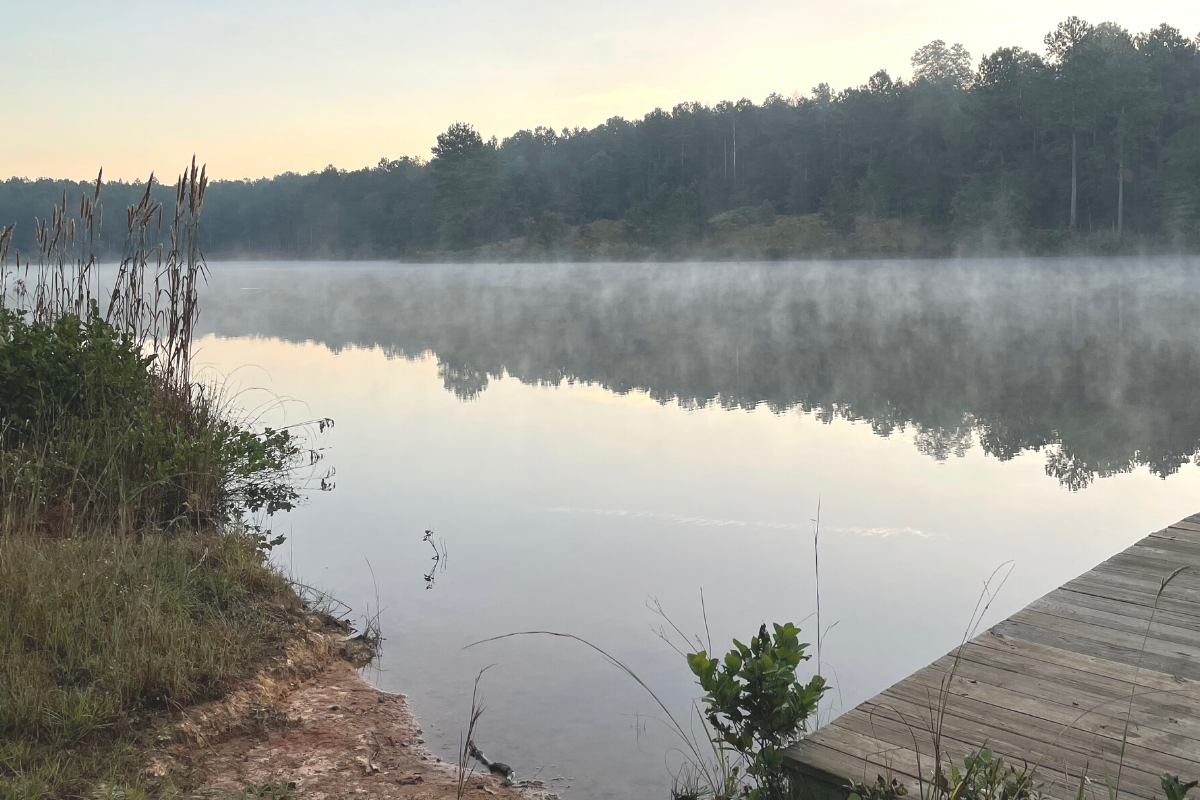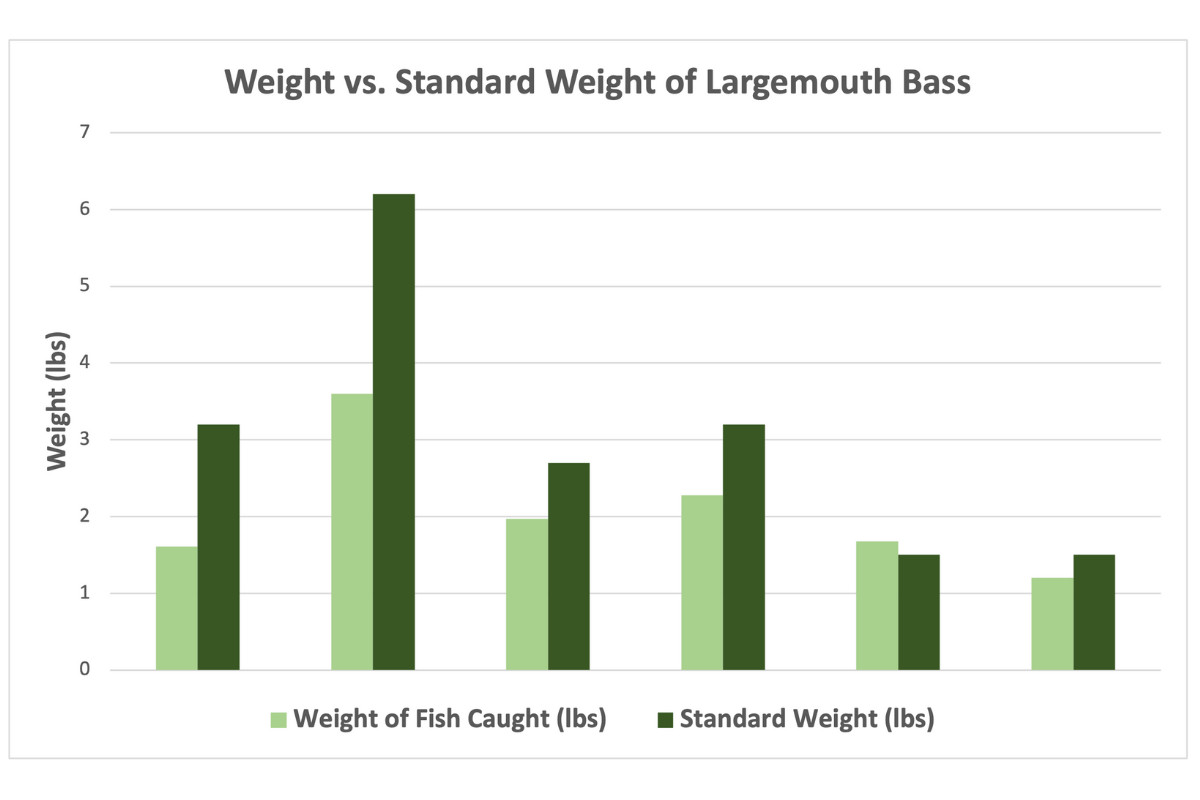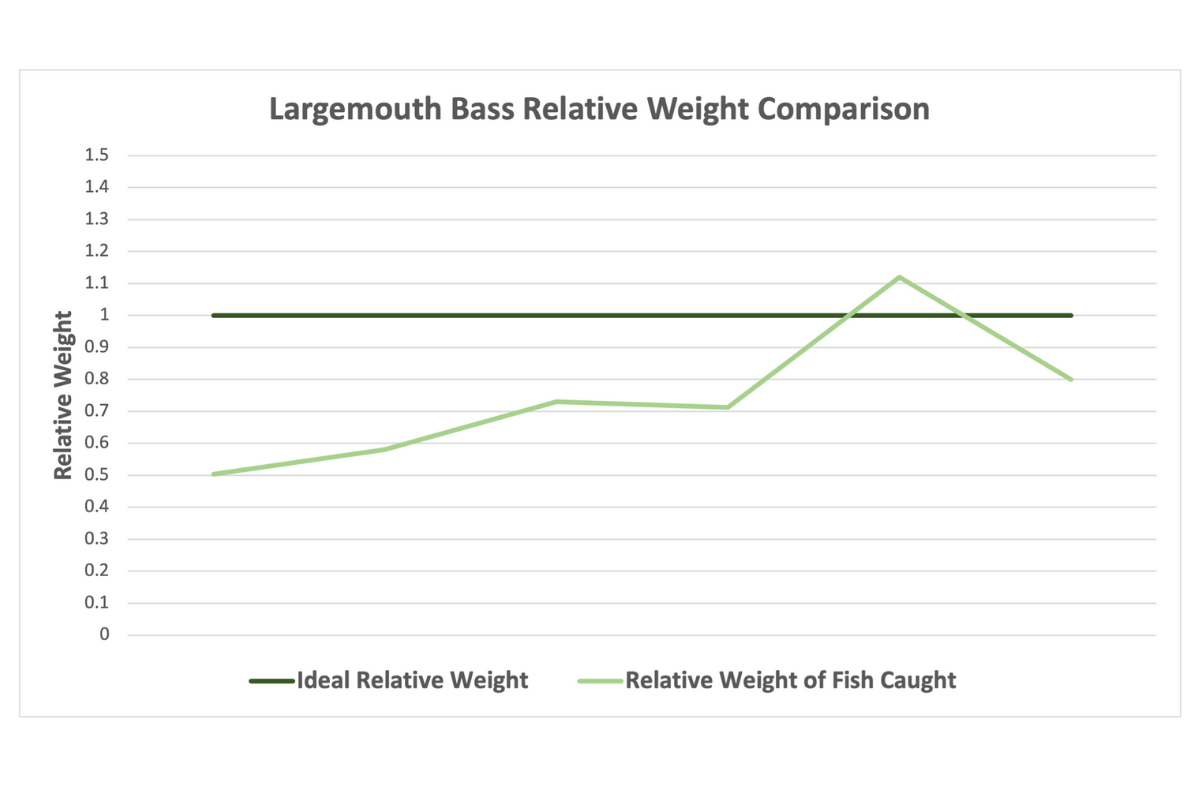Having a pond full of largemouth bass is usually good thing, but what if all those bass are relatively small and never get larger than 3-4 pounds? There are many reasons why bass populations become stunted over time and stop growing. It could be a result of the lack of prey, lack of availability to prey, or largemouth bass overpopulation.
In April 2021, the biologists at TLC Perfect Pond met with the owner of a 25 acre farm pond to perform a comprehensive evaluation which included an electrofishing population sampling, vegetation survey, and water quality analysis. The goals for this pond, as stated by the owner, were to improve the trophy largemouth bass fishery, maintain quality sunfish populations for fishing, and maintain high water quality for the pond. You can see that complete assessment here.

One of the recommendations for this pond was to improve the growth of the sunfish populations so the bass in the pond would have plenty of healthy prey to eat. We added a Texas Hunter feeder to help accomplish this goal. Our second primary recommendation was to periodically remove bass from this pond to help correct the largemouth bass overpopulation issue.
We returned to this pond in October 2021 to perform a largemouth bass removal via electrofishing. Our goal was to remove any largemouth bass with low relative weights — fish that appeared skinny and malnourished. If a healthy fish was caught during the electrofishing survey, it was returned to the pond so it could continue to grow.
Correcting the Largemouth Bass Overpopulation
Although we did not catch as many fish as we would have liked, we were able to remove approximately 30-40 lbs of largemouth bass with low relative weights. It was immediately evident that this pond still had quite a few unhealthy fish that weighed significantly less than a healthy fish of the same length would. For example, we harvested an 22″ bass that weighed only 3.6 lbs. In a healthy bass population, a 22″ bass can easily weigh 6-7 lbs.
The figure below shows the standard weight versus the actual weight for 6 of the fish we caught during the electrofishing survey. The standard weight is the ideal weight of a healthy fish for that particular length. As you can see, 5 of these fish had weights that were significantly below the standard weight for a healthy bass with the same length.

The relative weight of a fish is calculated by dividing the actual weight of the fish by the standard weight of a fish with the same length. The ideal relative weight should be 0.9 to 1.0, or 90-100% of the standard weight. The figure below shows the relative weights of the fish we caught versus the ideal relative weight (solid line at 1.0). As you can see, most of these fish had weights well below the average that we would typically see in a healthy bass population.

Based on the data above, we are still dealing with a largemouth bass overpopulation issue. Since vegetation is not an issue and sunfish populations are somewhat abundant, overcrowding is the most plausible explanation for the low weights in this bass population. We do recommend continuing to feed the sunfish populations so that they can grow faster and spawn more. The more sunfish production we get, the closer we’ll get to balanced predator-prey dynamics in this pond.
Our primary recommendation for this pond is to continue removing these malnourished bass to alleviate the largemouth bass overpopulation. We can do this on a large-scale through our electrofishing efforts, but it can also be done at a slower rate by fisherman. If a skinny bass is caught, it should be removed and not returned to the pond. In an unfertilized pond such as this one, 10-15 lbs of bass per acre should be removed each year to maintain healthy population numbers. Since this pond is obviously overcrowded, that number should probably be higher in this case.
Below you can see the video of our electrofishing and bass removal efforts at this pond. Please subscribe to our YouTube channel and click the bell notification button so that you’re notified each time we post a new video.

